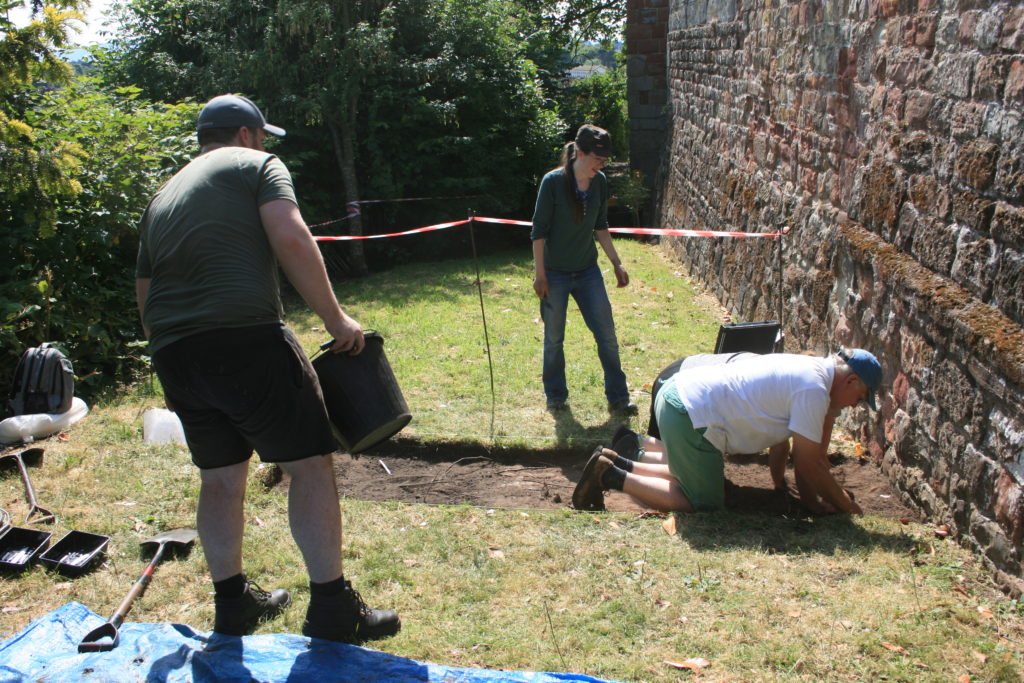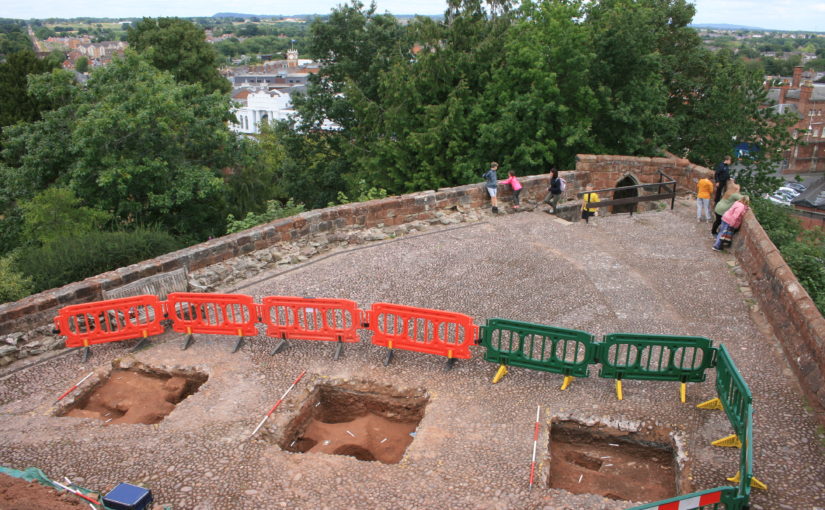Following the finishing of excavations at Shrewsbury Castle, the director of the excavations, Dr Nigel Baker, outlines what they found during the dig.
The third season of excavations at Shrewsbury Castle, funded by the Castle Studies Trust and staffed by experienced local volunteers, supervised by Dai Williams MCIfA, and students of University Centre Shrewsbury (University of Chester) under Dr Morn Capper, has just ended. Having investigated the inner bailey interior and one of its ramparts in previous years, the principal objective of this third season has been to examine the top of the motte – more easily said than done as it is paved by cobbles set in thick cement, which had to be drilled through by the volunteers at the peak of the recent heat-wave. The question was: did any archaeology bearing upon the character and use of early medieval motte-top buildings survive the depredations of Thomas Telford, who is known to have demolished a standing 13th-century tower and the ruined walls of at least one major building up there during his ‘restoration’ of 1786-90.
Subscribe to our quarterly newsletter

The answer is that buried archaeology does indeed survive, truncated, under Telford’s topsoil (imported to create a motte-top garden) and the 1990s cobbles. Cut into the orange clay top of the motte were post-holes, a post-pad and slots for sleeper-beams of buildings, generally of the period when local unglazed cooking-pots were in use (late 11th to mid-13th-century). In places these features were intercut, showing that the remains represent buildings that had existed over an extended period of time. Remains of the ‘great tower’, the timber tower that collapsed in the third quarter of the 13th century, were not positively identified. Some of the post-holes were packed with a distinctive crumbly green sandstone (Coed-yr-Allt beds) obtained nearby from the River Severn that has recently been identified as the stone used in the first phase of building the curtain walls and converting the Norman earth-and-timber fortress into a stone castle.

A second trench was also opened outside the north curtain wall to look for evidence of a projecting bastion in that area that is known to have still been standing in the 18th century. The wall itself shows no trace whatever of this, suggesting that its outer face was rebuilt in the mid-19th century. The ground outside the curtain wall was found to have had been stripped down to natural in the 19th century when the wall was indeed rebuilt. Concurrent research by Historic England in its registry files suggests this is not in the least surprising as the curtain walls evidently have a long history of instability and collapse.
Following three seasons of CST excavations and additional research for a conservation management plan commissioned by Shropshire Council, the site owners – including the first-ever examination of the curtain walls with dense vegetation now removed from their faces – attention is now turning to publication of this long-neglected Marches shire-town fortress.
Subscribe to our quarterly newsletter
Featured image, copyright Dr Nigel Baker
